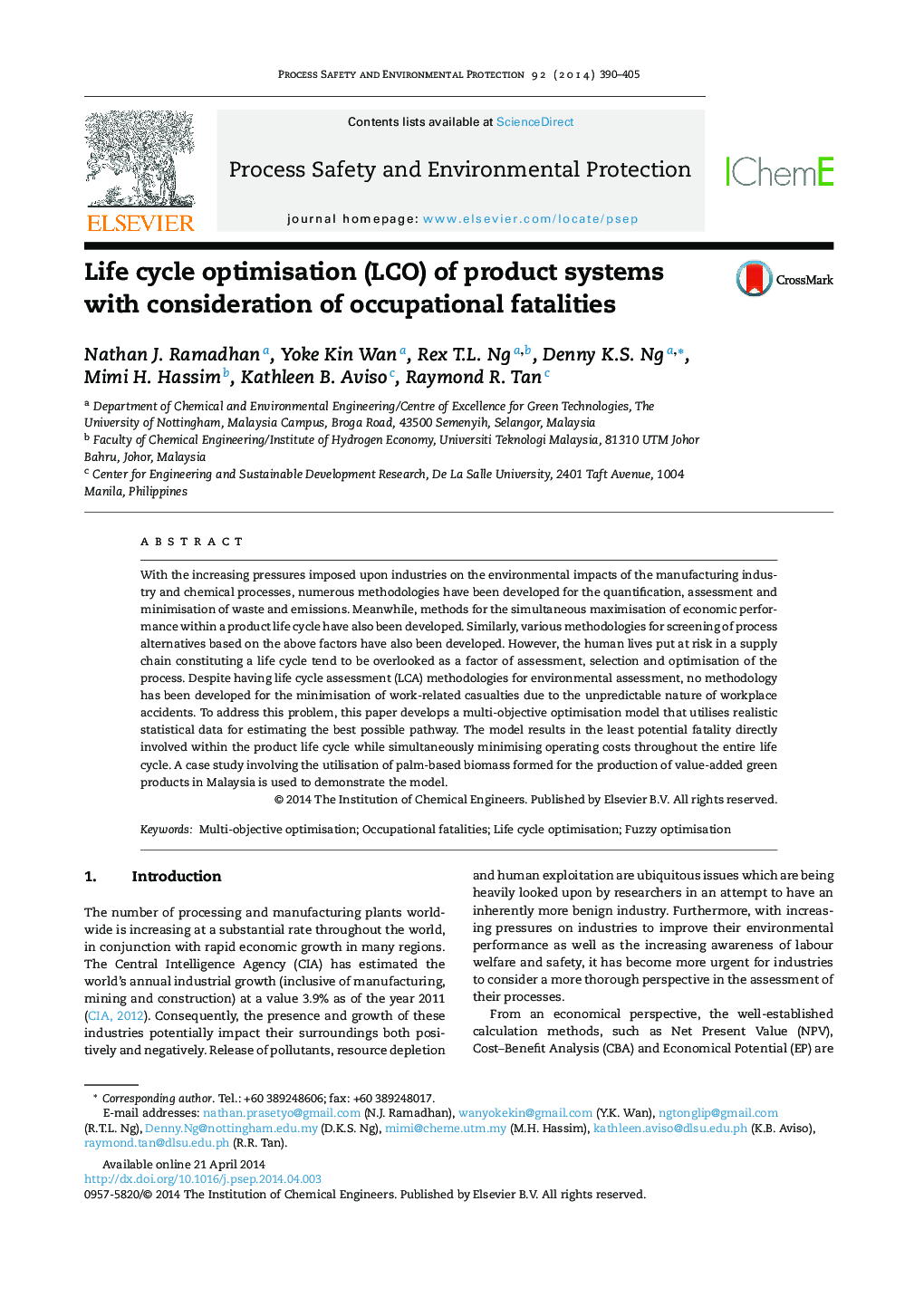| Article ID | Journal | Published Year | Pages | File Type |
|---|---|---|---|---|
| 588218 | Process Safety and Environmental Protection | 2014 | 16 Pages |
•Selection of pathway via Life cycle optimisation (LCO).•The inclusion of the life-cycle risk in LCO.•Multi objectives optimisation of both work-related fatalities and production costs.
With the increasing pressures imposed upon industries on the environmental impacts of the manufacturing industry and chemical processes, numerous methodologies have been developed for the quantification, assessment and minimisation of waste and emissions. Meanwhile, methods for the simultaneous maximisation of economic performance within a product life cycle have also been developed. Similarly, various methodologies for screening of process alternatives based on the above factors have also been developed. However, the human lives put at risk in a supply chain constituting a life cycle tend to be overlooked as a factor of assessment, selection and optimisation of the process. Despite having life cycle assessment (LCA) methodologies for environmental assessment, no methodology has been developed for the minimisation of work-related casualties due to the unpredictable nature of workplace accidents. To address this problem, this paper develops a multi-objective optimisation model that utilises realistic statistical data for estimating the best possible pathway. The model results in the least potential fatality directly involved within the product life cycle while simultaneously minimising operating costs throughout the entire life cycle. A case study involving the utilisation of palm-based biomass formed for the production of value-added green products in Malaysia is used to demonstrate the model.
